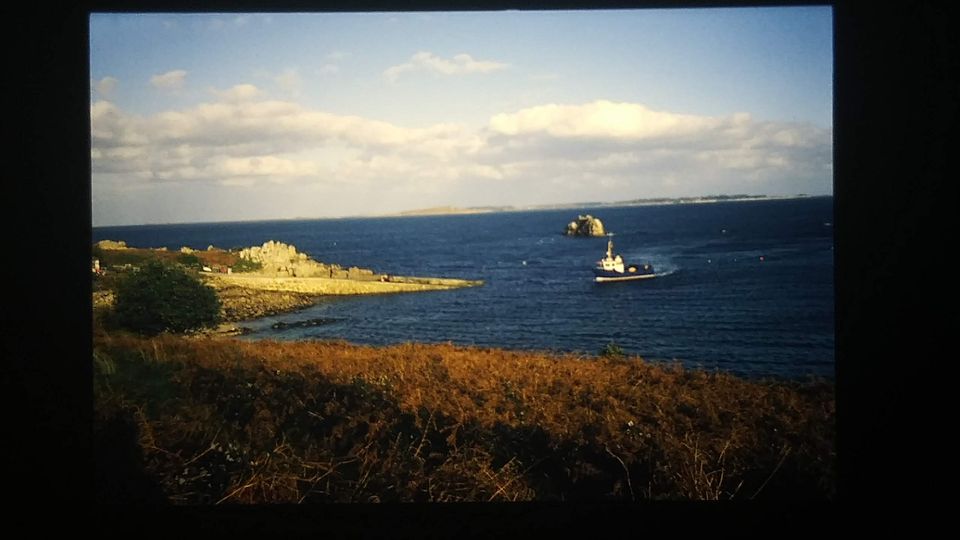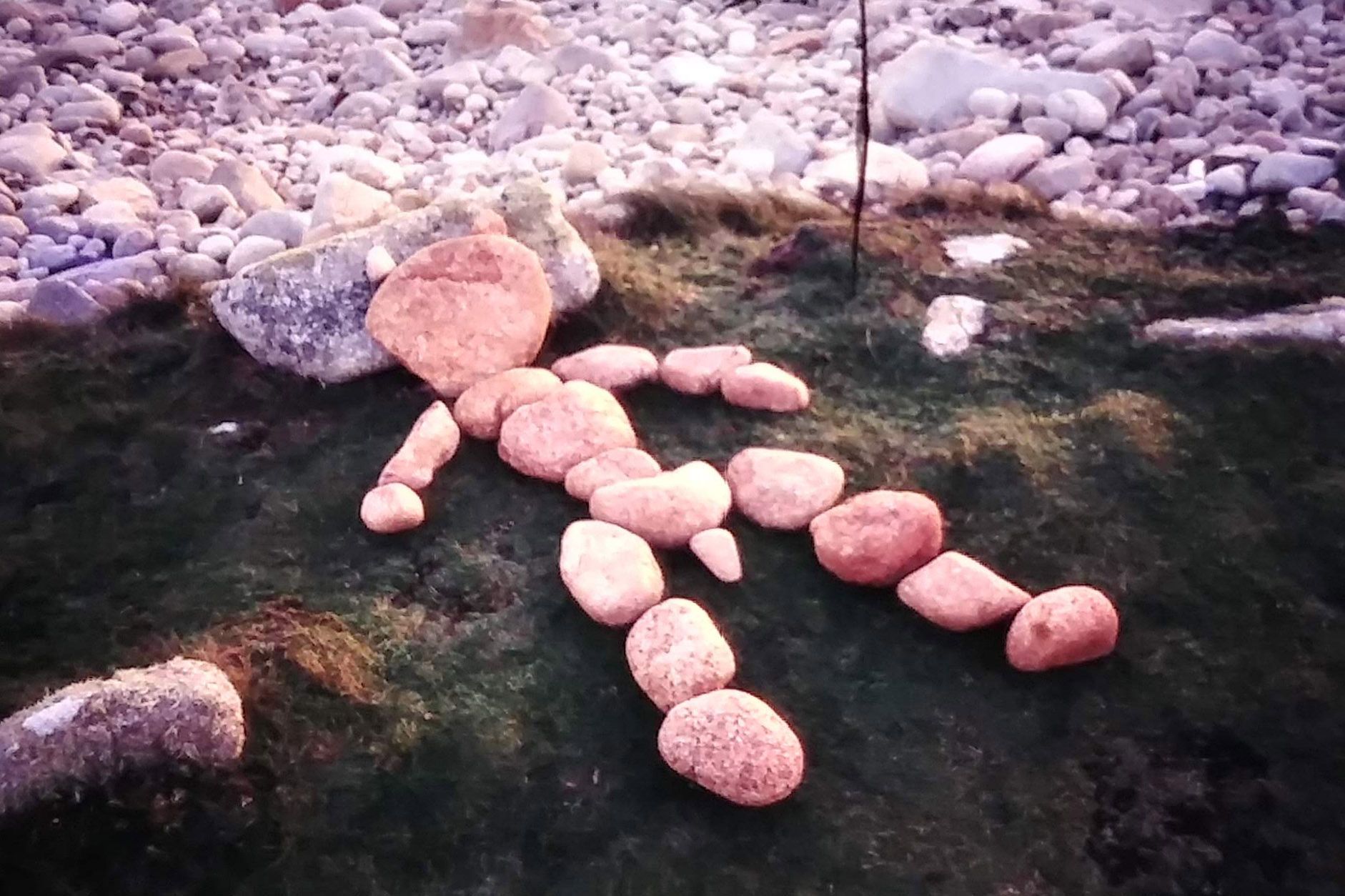Talent vs. Reaching Out

---12.07.1999---
Another slow, low evening, I’ve played out my guitar, my shoulders ache, and all around seems like thick mental soup. I got a little more done today. Lately I've realized my biggest challenge is not talent—it’s reaching out. I always thought it was talent. I always doubted that I had what it took. I knew I was pretty good, but I wondered if I was good enough. Without sounding pompous, I realize talent is not the problem—it’s letting people know. It reaches across every aspect of my life, letting people know I love them, that I enjoy their company, that I do good work, that I disagree. Letting people know... tricky, tricky.
------
I had a nice afternoon. Went down to help unload the freight boat around 1pm. Everyone gathers at the quay. The boat comes in; mail comes off; mail goes on, supplies, food, etc, etc. The quay is built at an angle. Tractors back down loaded with flowers or fish, and everyone helps with the transfer. No one is hired to do it—it’s a community thing. Most of the men that are available help out. It feels nice to be a part of that. After that I washed a mountain of dishes, cleaned the toaster (threw the crumbs out for the birds), the stove (accidentally turned the oven on full blast and left it), the tub, and the toilet, relaxed, then smelled something burning and had no idea what it was. A few moments later Phillip woke up, came down, and asked me what I was cooking. Eventually, we figured it out. Then I went to the shop; came back and unloaded everything; and went out again for a walk.
There are several great little spots I’m discovering. Last week I found a little patch that had tucked itself away behind a huge cairn, accessible only by a narrow path very close to the edge of a steep drop. Finding it was like having it pop out of a fairy tale. It was just perfect for lying down and watching the sea—long, seemingly-combed grass growing all over itself and presenting a naturally soft surface on which to lie, which I did. There are others: slabs of stone nearby have been cleft away from the main rock, fallen, and, in their new positions, formed quasi-caves. High atop three- or four-story tall formations, thousands of years of moss fill crevices, and bid one to sit.
Further down, a little man has come to life from simple pink-granite stones, grown tired, and decided to lie down, only to turn back into stone.

Beyond that is a spot called Long Point. It’s a funnel-shaped buffer zone that separates land and sea. Boulder-strewn and rough, it’s the next resting place for granite detritus cast off from the hills flanking it on either side. Opposite and to the right, just barely nudged off of the island, and no more than ten feet from the shore, stands a cut and creased crag as big as a townhouse. In this funnel-shaped bit, I spent a good portion of the afternoon. The tide was swollen and still coming in; clouds darkened the sky overhead while on the horizon the sun set in a clear, pink-orange haze, lighting up the sky over the Western Rocks like fire, like a view from another planet full of methane and ammonia, like a whacked-out science fiction oil painting from 3025 AD, absolutely foreign but beautiful.
The sea directly off the coast was dark but shimmering with those borrowed colors. It drew itself in by the shore, squeezing the last trickles from the long, wide, rocky, amphitheater-shaped bowl just below me, holding... and then hurling itself headlong up the slope. It inundated the spots I had climbed over just the other day. This heaving, churning, amazing sea threw a living room-full of water up the rocks at a time. It’s amazing to see the ocean’s landscape tilt and sway, liquifying the immediate horizon, rising to throw itself en masse up the rocks, drowning everything in a single torrent, thick and fast. Almost as quickly, the water fell away. It poured down the slope, exposing indecent amounts of rock. Impossible walls again lay bare. The sea breathed in, in, and gwooooorrrrrsch!! Then it climbed 20 feet in half a second, and this time almost landed on top of me. I sought higher ground before the next swell hit. And so I sat for about half an hour, watching the sea grind and churn and watching the sky go out in a dying glow over the far-off rocks and over the Bishop lighthouse, as the rain began to fall out of the angry, dark gray above me.
------
I think I know why I wasn’t all that fond of Phillip when I first met him. It’s because he’s very much the person I’ve been accused of being at times: overly analytical, unemotional, and uninterested in others unless they directly addressed something I was interested in. Strange to realize and even stranger to experience, but there you go, a lesson being learned.
And I've felt like I've painted him in a negative light. He’s not the antagonist I make him out to be. He’s all right, just a little disproportioned: huge intellect, smallish emotions, and quirky habits. You see, in my mind’s eye, I stare at him impolitely, the way others might fixate on someone who is unnaturally beautiful or tall.
------
I was just noticing the other day that one of the ancient easy chairs in my office bears the claw marks of a cat, long since passed on. It’s a funny old chair. It props up the far side of my desk, is a color that I can only describe as “lack of color,” and sits there, a slightly tattered member of someone else’s family. The whole house is like that though. Have I mentioned some of the stuff I’ve found around?
On the bookshelves in the kitchen, for example, sits a copy of Sons and Lovers by D. H. Lawrence, published in 1944, with the inscription, “Ediera, with best wishes from Gran,” and History for Juniors, published in 1931. In the abandoned folding desk, a quote for a 10" precision saw bench for Mr. S. E. Ross, Pengold House dated the 17th of December 1954 still resides in its original envelope, the accompanying brochure still promising “prompt and considerate attention” from the factory after all these years.
A stamp clipped from another envelope lies on the counter among various household debris. It was lying next to the bread recipe book I’ve been using. I recently marked a page with it. It looked like someone clipped it the other day. Phillip perhaps? But no—a closer inspection reveals a cancellation date from 1959. In the small, innocent little room that I recently moved out of—the one that spends all day staring at the lighthouse—I found a composition book, also from the 1950s, labeled “Classics, Form III.” Inside it was thick with black-and-white photos and articles about Pat Boone. “Meet the Guy Without a Gimmick. Howdy! It’s Pat Boone,” “To Kiss or Not to Kiss... That’s Pat Boone’s Problem.” It’s funny to find, through this dense collection of magazine clippings, an early pop star idolized to the point of sainthood in a teenage girl’s devotional album. The house seems to be a repository of interesting and odd little windows into, and unmoored from, other times.






Member discussion